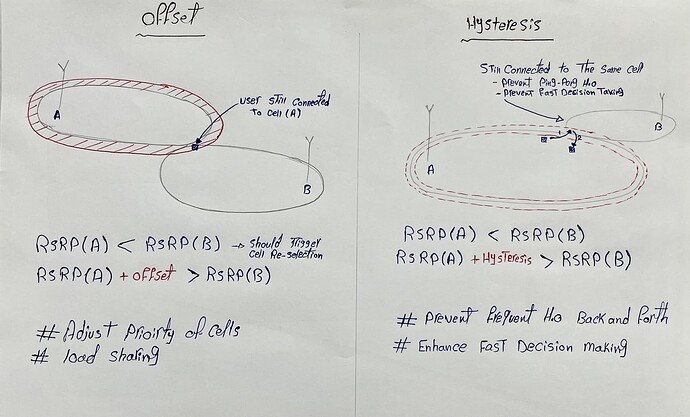My observations…
-
Offset: this parameter is for serving cell should be better than neighbour cells before going to send measurement report, ensure that serving cell power should be good than neighbours.
-
Hysteresis: this is for Neighboring cell should be better than serving. Before going to send measurement report, ensure that Neighbouring power should be high/good than serving.
-
Timetotrigger (TTT): this parameter is used for to avoid pingpong handover when measuring the power levels.
Three parameters used for handover optimization to avoid pingpong Handovers and used for Handover A3 event.
2 Likes
My understanding is that Offset and Hysteresis are the same.
Neighbor cell RSRP should be offset higher than serving cell RSRP to trigger A3-based handover.
If time to trigger (TTT) is implemented then A3 handover is triggered only if the above (offset) condition is met for a duration <= TTT.
This understanding is based on reading some papers. I, however, haven’t seen Time-to-trigger mentioned in the 5G standards. Can someone point out a 3GPP standard that talks about TTT?
- Cell Hysteresis: Adds a buffer to prevent frequent handovers, ensuring smoother connectivity.
Cell Offset: Adjusts signal priorities for better resource allocation and load balancing.
- Both enhance stability and performance in mobile networks like LTE and 5G.
LinkedIn: 
